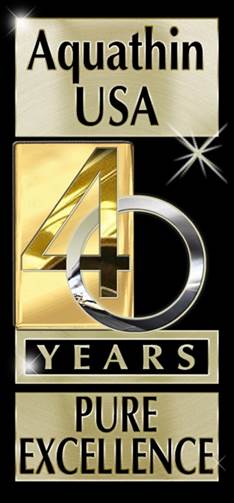Stretch of Cuyahoga River polluted with viruses
"Aquathin OP-ED Commentary"
In the recent months you've received several Splash NewsBulletins concerning the facts that "everyone lives downstream from someone else". The quick read below discusses the tremendous amount of fecal coliform and virus in the Cuyahoga River and that it is a main source for recreational use. Some of you may remember that this is the same river that caught fire some 40 years ago. Another real problem you will read is the "stupid" comment from a doctor who states that alcohol related boating accidents are a greater risk. Apparently he did not know that 56% of the water tests failed for disease causing water borne microorganisms. Even the local park officials have more common sense !!!
Stretch of Cuyahoga River polluted with viruses
AKRON, Ohio -- The Cuyahoga River between Akron and Cleveland is polluted with viruses from wastewater that can cause serious diseases, according to a study by the U.S. Geological Survey. The main source of these pathogens is Akron's combined sewer system, which dumps nearly 3 billion gallons of runoff contaminated with human waste into the river each year, said Rebecca Bushon and Donna Myers, of the agency's Columbus office.
Like the sewer systems in many older cities, Akron has a system that combines stormwater with household waste. The systems frequently overflow during major storms. Experts have known for a long time that combined sewers and, to a lesser degree, stormwater runoff can trigger high E. coli bacteria counts in the river for 2 to 3 days after heavy rains. But a preliminary study has found viruses as well as disease-causing bacteria in many samples of the river water. "It's a serious risk,'' Myers said.
A statement released by the agency said, ``We have determined that infectious enteroviruses are present in 56 percent of the samples analyzed in calendar year 2000. ''Such enteroviruses can cause a number of serious illnesses, including hepatitis A, polio, gastroenteritis, myocarditis and aseptic meningitis.
Mayor Don Plusquellic said Akron simply does not have the money to fix the problem without assistance from the federal government. "I have been to Washington more times than I can count to get financial assistance to help us with this,'' Plusquellic said. ``Without assistance, we would have to triple our sewer rates to our citizens. The cost has to be defrayed.'' Plusquellic said that repairing the city's sewers is expected to cost about $350 million.
Those most at risk from the pathogens in the Cuyahoga River are anglers, boaters and swimmers. The river is not used for drinking water. Dr. Steven Gordon, an infectious disease expert and epidemiologist at the Cleveland Clinic, said assessing the risk to individuals along the Cuyahoga is "almost impossible to do.''
Boaters are probably at greater risk from drinking alcohol or not wearing life jackets than from contracting a waterborne disease, he said.
The U.S. Geological Survey has been looking at bacteria levels in the river in the Cuyahoga Valley National Park for years in an effort to determine whether the park can safely gauge when the water quality is safe for canoeing and swimming.
Recreational use of the river is not recommended because park officials can't predict when bacteria levels are low enough for safe use, said Brian McHugh, the park's chief ranger.
Bushon and Myers said eliminating 90 percent of Akron's combined sewers would make the river safer for recreational uses.
FOR THE BEST TASTE IN LIFE
Think Aquathin...AquathinK!!
Edited from Tech Bank 7/11/02


